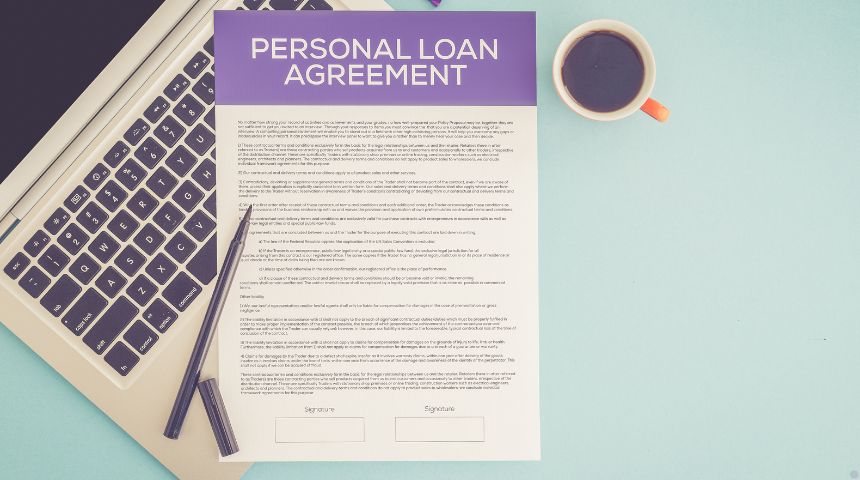How to Prequalify for a Personal Loan
A personal loan is helpful when you need to pay off some debt, raise extra cash to buy an asset or cover an emergency. Prequalification is a good way to determine how much personal loan you can get. However, this process may not be straightforward. It's not surprising that “prequalify for personal loans” is a popular search query.
In this guide, we explore the nitty-gritty of prequalifying for personal loans. From its multiple benefits to the conditions for prequalification and what to do if your application is approved or disapproved, you'll find everything you need to know about prequalification in this guide.
Why Should I Prequalify for a Personal Loan?
Why should you bother with prequalification? It's not just about knowing how much you can borrow. It's also about being able to compare your options and understand the terms and conditions of the loan. Let's break it down.
- Know how much you can borrow. It’s not uncommon to qualify for a loan amount less than expected. Most people get less than the amount they hope to get very often. Therefore, prequalification gives you a better idea of how much you can get and thus tailors your expectations more appropriately.
- You can compare your options. Every lender has its own rate. While the rates may vary based on the borrower’s credit score, prequalification allows you to compare rates from different lenders.
- You learn the terms and conditions of the loan. Upon prequalification, the lender will disclose the terms and conditions of the personal loan you can get. This way, you can deduce your responsibilities and, very importantly, the monthly repayment plans.
Conditions to Prequalify for a Personal Loan
The goal of prequalifying for a personal loan is to allow the lender to access your credit score and your ability to repay the loan. To access these lenders, you can simply type “prequalify for personal loan” into Google, or go directly to the lender's website or a website aggregating loan options. Whatever your preference, you would be expected to do the following:
Fill Out Forms
You'll be required to complete a form stating the loan amount, purpose and term, your contact information, employment status and income and other financial information, such as your assets, investments and retirement accounts. Ensure these details are accurate; this will be the basis for the loan approval.
Submit the Forms
Before submitting the form, the lender will usually ask you to consent to its terms of use and agreement. Once you tick the box and submit it, the lender will inquire into your credit details to determine if you qualify for the loan.
Check Your Status
You'll know if you are prequalified for a personal loan within minutes of submitting your application. You can see your potential loan amount, estimated annual percentage rate, monthly repayments and other fees.
What to Do If You Prequalify for a Personal Loan
Your prequalification for a personal loan is not the same as your qualification, so please note that this is only a preceding phase to getting the loan. Hence, the next thing to do after prequalification is to review the lenders’ offer. Review the proposed loan amount, term, interest rate and monthly payment if you only applied with one lender.
However, if you applied with more lenders, you must compare their offers to find the best interest rate and terms that suit you.
When comparing loan offers from different lenders, it's ideal to review their interest rates, fees and terms. Shorter loan terms have lower interest rates, and longer loan terms have higher interest rates. The funding timeframe is also another factor to consider, especially if you need the money quickly. Finally, look for other perks like discounts and optimal customer care service.
Once you decide on your preferred personal loan option and lender, the next step is to apply for the loan. Depending on the lender, you may be required to provide more information on your income and financial details, such as bank statements or tax forms. The lender will then run a credit check and decide if you qualify for a loan.
What to Do If You Don’t Qualify for a Personal Loan
Not everyone who goes through the prequalification process will get a personal loan. If you are denied a personal loan, here’s what you need to do:
- Make inquiries. The lender is obliged to discuss why your prequalification was denied if you ask. The lender may also share more insights on how you can improve your chances of qualification or other loan options.
- Review your credit score. Your credit score plays a huge role in your prequalification applications. It's important to review your credit score to ensure you keep a good credit score and an error-free credit report. If you are convinced your credit score is good, you can apply for other loans.
- Apply with a cosigner. Some lenders will allow you to apply with a cosigner to boost your chances of qualification. It may also help you get better rates, loan terms and other perks.
- Find alternatives. Depending on your reason for applying for a personal loan, you can consider other loan options. Home equity loans can work for home improvements, and a credit card balance transfer can also consolidate debt.
Prequalifying for Financial Success
A personal loan pre-qualification is not the same as approval for a personal loan. You can think of it more as a rough estimate of the loan amount you may get. Despite the uncertainty, it's still worth your time as it can help you find the best personal loan lender and save some money. Whatever the outcome of your application, there are always lessons to learn to improve your next prequalification application, personal loan application and credit score.

